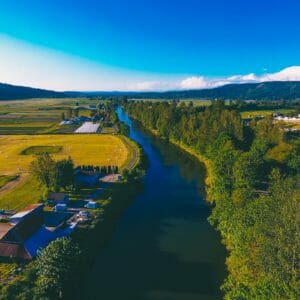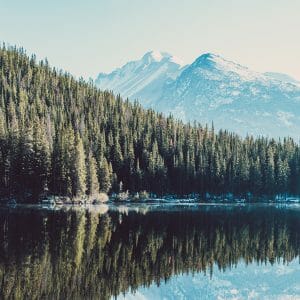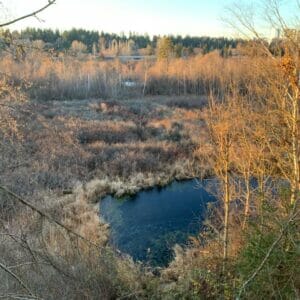Wetlands are home to many species of birds, fish, amphibians, reptiles, insects, and other creatures. They’re also vital for water quality and flood control. But wetlands can pose development challenges. A wetland surveyor can help you determine how to work with buffers and development regulations that affect your project. You may have more flexibility than you think.

Choose the right company for your project.
There are several different types of surveyors who work with landowners during the development process. If you’re dealing with wetlands, your wetland surveyor needs to be a Professional Wetland Scientist (PWS). A PWS is a wetland specialist qualified to complete a delineation of critical areas (e.g., wetlands, streams, and shorelines) adjacent to your property.
The difference between a Professional Wetland Scientist (PWS) and a land surveyor, is their qualifications. A PWS is qualified to delineate wetlands, while a land surveyor has a specific license to survey property lines, topography, and other features. You may need to work with both consultants depending on your project.
Prepare for your survey.
Before you schedule a wetland survey, make sure you understand what you need to do. It would be best to prepare by getting permission from the landowner, ensuring access to the property, and ensuring you have a signed cost estimate and clear scope of services.
Determine what kind of project you’re planning.
A wetland specialist will need to see the Site Plan for your proposed development. The type of development (residential, commercial, or industrial) will determine which wetland buffers and regulations apply to your project. Single-family residential projects sometimes require smaller buffers, while multifamily residential, commercial, and industrial projects require larger buffers.
A wetland surveyor will likely need to include your project’s Site Plan in their report to the Local (City/County) State, or Federal jurisdiction your project is in. If your project overlaps a wetland buffer, your wetland specialist may need to prepare a mitigation plan. This can include planting native vegetation and removing invasive plant species.
Understand the Different Types of Wetlands.
Wetlands are distinguished by how much water they contain. When most people think of wetlands, they picture large expanses of standing water. While these areas can undoubtedly meet the definition of wetlands, many do not fit this description.
In western Washington State, many wetlands are “saturated only”. These wetlands may not pond at all during the year and can be difficult to distinguish from other areas. An area saturated within 1 foot of the soil surface for 2 consecutive weeks during the growing season can meet wetland criteria.
A wetland specialist and Professional Wetland Scientist can determine which areas are regulated wetlands, and which areas do not meet wetland criteria.
Know what you need to know about wetlands.
Wetlands are found throughout North America. They are often associated with rivers, lakes, streams, ponds, and other bodies of water. In western Washington, including King County, Snohomish County, Whatcom County, and Thurston County, wetlands are considered one of the most important ecosystems because they support a wide variety of plants and animals. Wetlands are disappearing rapidly due to development, pollution, and climate change.
How to get started
Do you need to hire a wetland surveyor for your project? Give us a call today and we will help make your project a success! We have helped hundreds of landowners achieve their project goals of maximizing their buildable area and keeping harmony between the built and natural environment. See our testimonials below and give us a call at (425) 949-6659, or email us at Kmaloney@EastsideEnvironmentalPros.com and tell us about your project.
This article was written by Kellen Maloney, owner and chief ecologist of Eastside Environmental Pros, Inc. Kellen is a Professional Wetland Scientist (PWS) who enjoys helping new and experienced landowners create their vision for their property.





